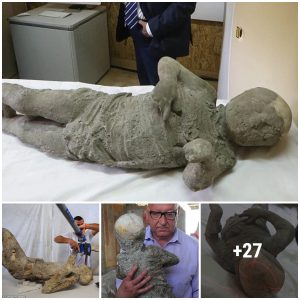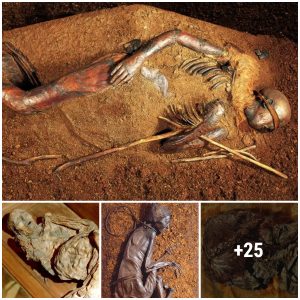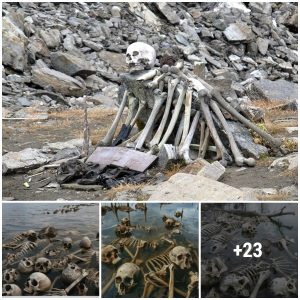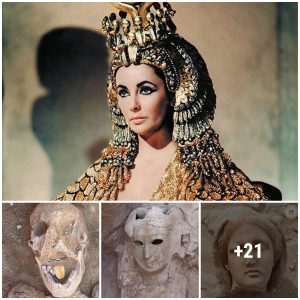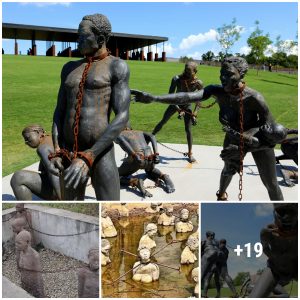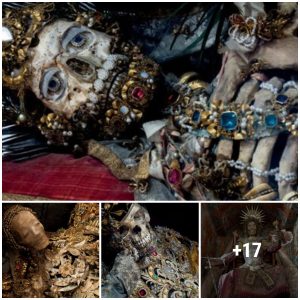The seven-foot statues have expressionless faces—and a mysterious history.
The faces of the towering sculpted giants of the Sardinian necropolis are eerie—they bear an almost emotionless expression that recalls the Greek Archaic smile. Their deep-set eyes and blocky noses seem to betray a feeling of protectiveness, even world-weariness.
Even more unique is their stature—some are almost seven feet tall—and their age. Scholars date the artifacts back nearly 3,000 years to between roughly 850 and 750 B.C.E.
Now, they have even more to study. A new excavation at the Sardinian necropolis of Mont’e Prama recently turned up torsos of two more towering statues of boxers. Researchers identified them by the distinctive shields around their midsection, similar to two others found nearby in 2014, reports the Guardian’s Angela Giuffrida.
“It’s an exceptional discovery,” says Dario Franceschini, Italy’s minister of culture, in a statement. “Two new jewels are added to this statue group with its mysterious fascination, capable of attracting the attention of the whole world.”

But the latest statues pose a unique challenge for archaeologists. They must first be removed from the earth in a way that allows for their preservation.
“The two large and heavy blocks of torsos will need time to be freed from the sediment around them so they can be prepared as is necessary for their safe recovery,” says Monica Stochino, lead archaeologist for the city of Cagliari and the province of Oristano and South Sardinia, in the statement.
Part of the fascination with the Mont’e Prama site stems from its relatively recent discovery. In 1974, Sardinian farmers digging in the fields struck what turned out to be a stone head. It turned out to be one of the most important archaeological finds in the area—and a window into the island’s deep history.
At first, archaeologists thought the statues may have dated to Carthaginian settlements in Sardinia. Carthage conquered parts of the island around 500 B.C.E. in an attempt to exert “direct control” over the island’s inhabitants, per Encyclopedia Britannica.
But later dating revealed the giants to be from much earlier than that, to a time when the Nuragic civilization dominated the island, around the 18th to 8th centuries B.C.E.

“Across the island, the Nuragic people built distinctive megalithic structures, known as nuraghi,” reports National Geographic’s Francesca Mulas. “Today, more than 6,000 listed nuraghi pepper the island’s landscape—an astonishing number for a territory that measures little more than 9,000 square miles, or slightly larger than Wales.”
Excavations have also yielded a “major burial road,” according to the Guardian. The nearly 200 graves date to between 950 B.C.E. and 730 B.C.E.—and the majority held young men.
Since the mid-1970s excavations, archaeologists have continued to find fragments and larger pieces, like these torsos, of the giants.
Out of these, they have identified roughly two dozen statues, the Local Italy reports.
Archaeologists have classified the statues based on their characteristics. According to the Civic Museum in Cabras, where some of these statues now reside, they have so far identified 16 boxers, five archers and five warriors.
Their function is still up for debate. Archaeologists at the site hypothesize that the statues may have been ancestral custodians watching over the necropolis, a commemoration of an important local historical event or even a symbol of the lives of the buried.

The giants’ fragmented state tells scholars that they were at one point purposely destroyed, raising even more questions. Did the Nuragic people break the statues themselves during an internal conflict, or did another external group do so in later decades?
Those questions remain unanswered. Meanwhile, Mulas writes, Sardinians see the statues as representative of the island’s long history.
“The faces of the giants of Mont’e Prama have become so well-known and celebrated,” writes Mulas, ”that, for many, they have come to replace the nuraghi buildings themselves as the symbol of the island’s ancient past.”
